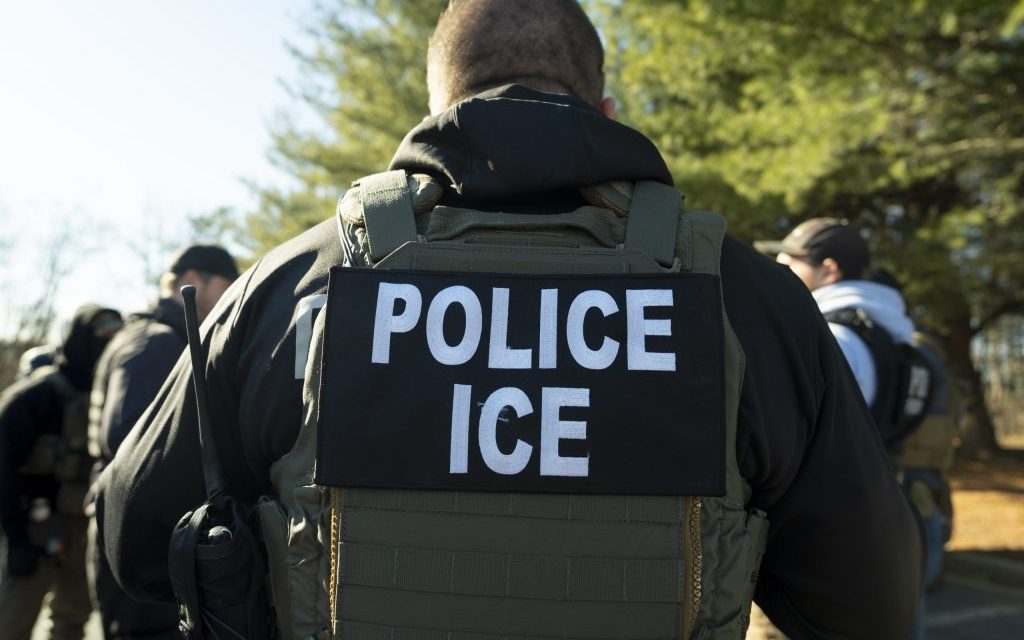By Quintessa Williams
Word In Black
Imagine sending your child to school, only to worry that they might not come home — not because of violence or illness, but because their classroom could become the next target of immigration enforcement.
The current presidential administration’s push to end birthright citizenship and expand immigration and Customs Enforcement presence in sensitive locations like schools has sparked a constitutional and moral crisis. A federal judge in Maryland has blocked the order, but the mere possibility has sown fear in communities and classrooms nationwide.
“The attempt to end birthright citizenship is a racist attack,” says Amena Elamin, National Youth Organizer for the Black Alliance for Just Immigration (BAJI). “It’s rooted in the same anti-Blackness that has historically denied rights to Black people. This isn’t just about immigration — it’s about who is seen as belonging in this country.”

It’s not just an issue for immigrant students of Mexican, El Salvadoran or Venezuelan descent, either. Black students also come from immigrant families — or mixed-status families — and they’re caught in the crosshairs of policies that threaten to separate families and destabilize communities.
“Our communities are deeply intertwined,” Elamin says. “There are so many mixed-status families where one parent might be African American and other Sudanese, Jamaican, Haitian — you name it. These policies don’t just impact immigrants — they separate Black families, which then disrupts their children’s education. They cause harm that extends beyond immigration status because these communities are already marginalized.”
For Black students who are already over-policed and disproportionately pushed into the school-to-prison pipeline, these policies compound existing racial inequities, leading to Increased absenteeism, disengagement and long-term setbacks for an entire generation of students.
President Donald Trump, who pushed such efforts early in his second term, said the 14th Amendment, often cited in immigration debates, was intended only for the “children of slaves” and should not have been interpreted as “extending citizenship universally to everyone born within the United States.”
Schools no longer just a place of learning
Schools, once considered safe havens, are now potential sites of immigration enforcement. In Chicago, federal agents mistakenly believed to be ICE officers recently appeared at Hamline Elementary School, sparking panic.
“Our attendance was pretty bad across the city. There was like 50 to 80 percent attendance,” one Chicago Public Schools teacher told NPR.
Studies from Harvard’s Immigration Initiative show that students from diverse or mixed-status families experience higher levels of anxiety, depression and school disengagement. In addition, WCPO news recently reported that Tri-State teachers have witnessed a 50 percent drop in attendance due to the growing fears of immigration raids.
“In multiple classes, I am missing half of my students,” Kendra Adamson, a teacher in Ohio, told WCPO 9 News. “Our students are living in fear that they will be deported.”
For Black immigrant students, the stakes are especially high: they face multiple threats: racial bullying and harassment in schools, racial profiling by teachers and school security, and deportation, all while trying to get an education.
“School should be a place of learning, not fear,” Elamin says. “Our students are not only just facing incarceration, but deportation, too. How can students focus on their education when their families could be torn apart at any moment?”
How can we protect black immigrant students?
Elamin believes schools must take a stand. She offers several recommendations for educators and administrators:
- Refuse to share sensitive information or immigration status with federal authorities. “Schools should not act as an extension of immigration enforcement,” she says.
- Provide “Know Your Rights” training for students, families and staff so that Black communities understand their legal protections.
- Offer or ensure culturally competent mental health support tailored specifically to Black immigrant students who experience compounded stress from both racial and immigration-related trauma.
Liberation is collective
Elamin also stresses that while schools have a role to play, parents, community members and allies must also take action.
“Liberation is collective,” she says. “We can’t fight for justice in silos, and our students deserve schools where they can learn and grow without constantly looking over their shoulders. Education should be a tool for freedom, not another battleground for exclusion.”
This article was originally published by Word In Black.
The post New policies endanger security of immigrant student population appeared first on AFRO American Newspapers.











